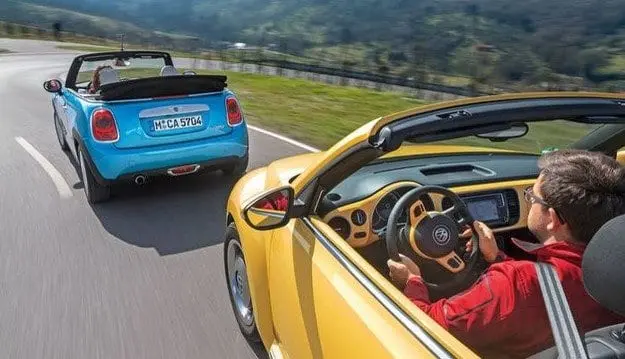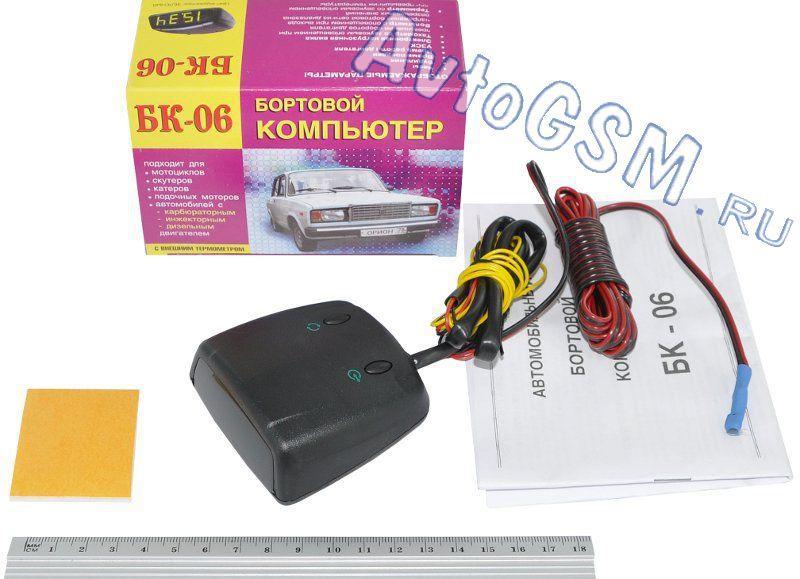
Test drive Mini Cabrio, VW Beetle Cabrio: Hello sun
Content

Somewhere it is always summer, if not on the street, then in our hearts. We invite the sun
We've worn the serious faces of German car testers, driven around test sites, secondary roads and highways, in sun and rain, measured interior noise, removed gurus, raised and lowered wind deflectors - and we have time to admit: serious for Mini.
Because - it's really inappropriate to announce the result at the beginning, but it responds so well to drama - in this test, the Mini Cabrio wins. This was unthinkable for the previous two generations of the 330 open model. But then in the Mini clan, the desire to be not only recreational, but also full-fledged small cars, which should be taken seriously, flourished.
It may not end well
This development poses a threat even to cars with a pronounced character, as the case of the VW model showed. Indeed, since 2011 it has been called the "Beetle of the 21st century" (which can be translated as "Turtle of the 2013th century"). In the XNUMX, a convertible appeared in which there is nothing but the cheerful negligence of its predecessor. Instead, this model has since been casually ignored. While the designers have updated the rest of the lineup with transverse engine modules, Beetle has taken care of only minor updates; What is coming in May will also be only superficial.
Mini Cabrio is built on a new base - the model is 9,8 cm longer and 4,4 cm wider, the trunk volume is 40 liters more. Thresholds are more resistant to deformation, reinforcing elements in the front and rear of the floor are more resistant to torsion. As for the statement that the rollover protection design is “better camouflaged”, we will jokingly ask: “Like a princess or like a hippopotamus?” And now let's just say that aluminum arcs are built in more discreetly and in case of danger, pyrotechnic devices shoot them in just 0,15 seconds.
Let's talk frankly
Full openness in the Mini is achieved in 18 seconds and reduces trunk volume to 160 liters, which, despite the guru's lift function, is not very convenient to use. At any speed in front of the already covered with soft upholstery, the soft top can be driven 40 cm back, like a hatch, and up to 30 km / h the guru opens completely. Thanks to the vertical A-pillars, the air flow inside the Mini was highly curled. But if you lift the side windows, you can stay dry even in a light pouring rain.
The beetle pushes the roof open for nine seconds, but then the folded guru has to be covered with a bulky case. This is usually done only once, after which the lid remains at home, where it takes up half the basement, not the entire trunk of the Beetle (which still holds 225 liters). When the side windows are removed, the Beetle blows the same strong wind as the Mini. However, the windows are higher and when raised, the VW model blows less than the British convertible. For anyone who wants to be even more loyal, a deflector is offered. At VW, it costs 340 euros in Germany, is attached to the trunk using a special mechanism and is easier to install than the Mini (578 levs).
Wind protection is a more important source of comfort than losing passenger seats. Because behind, despite the larger size, there is no more space than it was before. If an adult passenger is sitting there, it always seems that he was arrested. Although the Beetle is 45,7 centimeters longer, it doesn't fit second-row passengers much more comfortably.
What about function management? On VW, after the launch of the model, there were practically no changes, everything is clear as always. Apart from the lane change assistant, there are no driver assistance systems. But for 268 lv. Foil with a nickname can be glued on the side - well, not "tortoise", but "Kefer", "Beetle", "Escarabajo" or - annoyingly - "Volkswagen" (84 levs on the back cover). Mini also offers a wide range of equipment and personalization options. The goal of the new model was to make sense of the charming ergonomic chaos of its predecessor, which was partially achieved - the charm is now less, but the chaos remains the same. Thanks to BMW's design-adopted iDrive Function Control System, the user quickly navigates through menus by turning and pressing the controller. However, the fuel gauge and tachometer are too small. And you're wondering what the changing LED ring around the center display is supposed to mean. And yes, of course, it shows “event functions”.
Let's start the engine. In the Cooper, it's a 1,5-litre three-cylinder unit that pairs very well with the fun-loving nature of the Mini. At first, the machine makes a drum sound, then picks up speed easily, but the too “long” gear ratio of the precise six-speed transmission suppresses its temperament. However, the way this car races into the corners thanks to the incredibly precise direct steering, how it holds tightly in perfect alignment with the front wheels, how to play with the rears when you let off the gas! It's true that it's not as spontaneous and wild as it used to be, but in road dynamics tests it turns out to be much faster than the Beetle. However, only a Mini can be like a Mini.
The VW convertible makes corners precisely, straight ahead, but more distantly, starts understeer earlier, as does the Golf Cabrio. Let's illustrate this as follows: Mini screamingly jumps from a three-meter springboard (he used to do it from a five-meter one) and crashes into the water with his ass forward, spewing spray to the nearest meadow. The beetle squeezes its nose and jumps straight from the starting block. Quite safe, but no one applauds. With a 1,4-liter turbocharged petrol engine, it is as fast as the Mini. There is a lot of restraint, however, because the four-cylinder prefers to pull with its high torque output rather than transmitting six gears that are not very precise at high speeds. Otherwise, with the Beetle, everything related to comfort is better: the seats are more comfortable, the driving performance is higher, the noise is lower. The Mini jumps on smaller bumps and hits larger bumps, but impresses with its very high twisting resistance.
Once everything was ... once
In the past, we tried to correct the impression of the Mini's weaknesses and lagging points by highlighting how incredibly good it is on the road. Now the Briton is no longer driving unattainably large, but he stops more resolutely, has an excellent arsenal of auxiliary systems, is more economical and cheaper. Cheaper Mini? Yes, that's right. As we said, we have reason to be concerned.
Text: Sebastian Renz
Photo: Ahim Hartmann
Evaluation
1st MIN Cooper Convertible – 407 points
Can a car built for joy in life win a tough comparison test? Cooper achieves this through spontaneous handling, strong brakes, good helpers and a more fuel efficient engine.
2. VW Beetle Cabriolet 1.4 TSI – 395 points
More space, a smoother engine, more comfort - all this does not change the fact that the car lacks support systems for pleasure. As well as motivation for dynamic driving.
technical details
| 1. MIN Cooper Convertible | 2. VW Beetle Cabriolet 1.4TSI. | |
|---|---|---|
| Working volume | 1499 cc cm | 1395 cc cm |
| Power | 100 kW (136 hp) | 110 kV (150 kW) |
| Maximum torque | 230 Nm at 1250 rpm | 250 Nm at 1500 rpm |
| Acceleration 0-100 km / h | 8,8 with | 8,9 with |
| Braking distances at a speed of 100 km / h | 36,4 m | 36,1 m |
| full speed | 200 km / h | 201 km / h |
| Average consumption fuel in the test | 7,1 l / 100 km | 7,7 l / 100 km |
| Base Price | 46 900 levov | 26 450 EUR (in Germany) |
